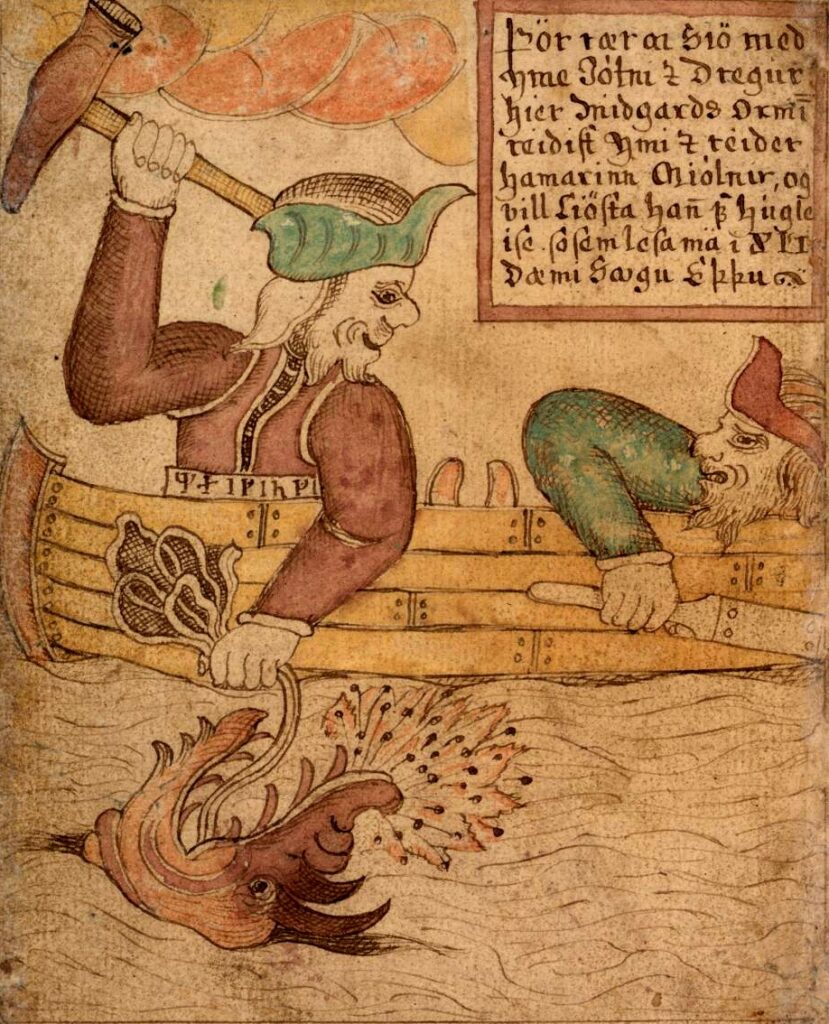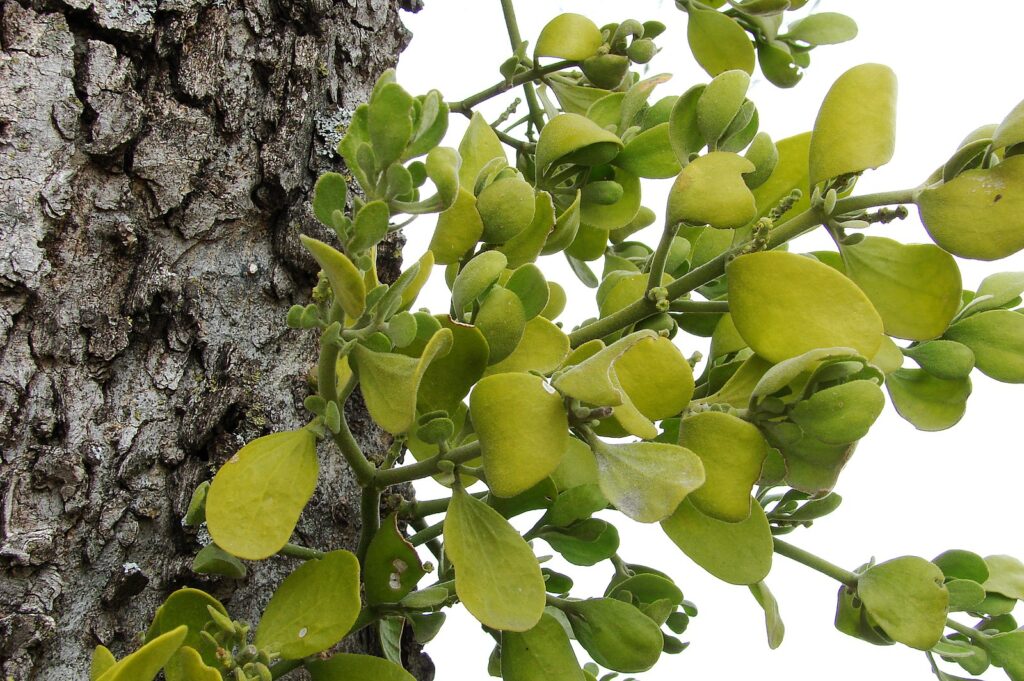I was reading Snorri’s Edda today, trying to sort out the story-differences between Snorri’s version and the poems in the Elder Edda.
For instance, the famous story where Thor goes fishing and catches Jormungandir, Midgard’s Serpent, plays out differently in Snorri’s “Gylfaginning” and the Hymiskvíða. Snorri frames it as Thor’s revenge against Jormungandir for pretending to be a cat and humiliating him in a contest in Útgarð, which is a stretch. (That’s super-funny if you know the story. Fairly funny. Maybe a little funny.) In the Eddic poem, Tyr brings Thor to the hall of the giant Hymir, who is apparently Tyr’s grandfather, to get a gigantic cauldron to brew beer for the Æsir’s feast with Ægir. In Snorri’s version, Hymir cuts the fishing line, releasing the monster, and Thor furiously punches the giant on the ear, sending him headfirst into the water–maybe killing him, maybe not. In the Hymiskvíða, Thor undergoes various challenges that ultimately earn him the gigantic cauldron, and when Hymir and his crew try to attack the Æsir as they’re leaving, Thor knocks their various blocks off with Mjǫllnir—a somewhat disappointing ending, I’ve often thought.

image borrowed from Wikimedia.
Then there’s the story of Baldr’s dreams foretelling his death, and how Frigg’s attempts to evade this bad result helped bring it about (a tragic pattern that Oedipus and Acrisius and other classical types would recognize). Loki displays his usual gender fluidity in this story, changing himself into a woman and getting an incautious Frigg to tell him that she had exacted promises not to harm Baldr from everything in the world: metal, and stones, and poisons, and people, and beasts, and snakes, and everything—except one thing.
Vex viðarteinungr einn fyrir vestan Valhǫll. Sá er mistilteinn kallaðr. Sá þótti mér ungr at krefja eiðsins.
—Snorri, Edda “Gylfaginning” 49
“A wood-sprout grows on the west side of Valhalla. It’s called ‘mistletoe’. It seemed (too) young for me to demand an oath from it.”

It takes me forever to get through sentences like this, not because they’re so very complex but because there’s such a multitude of things to look up and think about.
Valhalla is “death hall”, of course, but it also occurred to me on this reading that the west is associated with death in lots of cultures, especially classical ones, so the direction Frigg gives for the mistletoe is doomful in and of itself. Then there’s that weird word viðarteinungr. Zoëga glosses it as “wand”, which clearly doesn’t work here; but the Norse word is a compound of viðar “wood” and teinungr “sprout”, which effectively describes what mistletoe does: sprout on wood.
Then there’s mistilteinn, the Norse word for mistletoe itself. At first my lazy eye read the second root as steinn “stone”, which would have been interesting for a number of reasons. But no, it’s just teinn “twig, sprout” again—cognate with English tiny, as it turns out.
“But where do toes come into it?” I wondered, as I have often wondered about mistletoe. The answer is, they don’t. The Old English cognate for teinn is tān, and the ā of OE becomes ō in later English. People misheard mistiltōn as mistletoe(n), and started writing it that way, a form of language change called an eggcorn.
And the mistle (or mistil)? That, says Calvert Watkins and the AHD, derives from PIE *meigh- “to urinate”, and is cognate with mist, mizzle, and Latin mingere “to urinate”. Think of that the next time you’re walking through a misty, mizzling rain, or even reading Swords in the Mist.
